Kristen builds on her previous primer to deliver some more thoughts on building Winota EDH, based on recent testing and new cards from Core 2021.
Winota, Joiner of Forces has so far been a blast to play with in Commander. Despite earning bans in other formats, she remains a lot more reasonable in Commander, a format where decks can win as early as turn one or two. That’s not to say that she isn’t powerful, though; I would say that in the same way it’s hard not to build a good Jhoira, Weatherlight Captain or The Gitrog Monster deck, it’s also hard to not accidentally break Winota way beyond what’s acceptable for a more casual table.
I’d argue that she’s the perfect Boros Commander for the 8+ tables; and, with the right tweaking, can probably steal a couple of wins at a cEDH table from time to time too—though Najeela will always be a better option for aggro. Today, I’d like to build on my previous Winota primer by sharing some thoughts on specific cards and strategies that have been working for me, things I’d like to test more, and some cards that have overperformed.
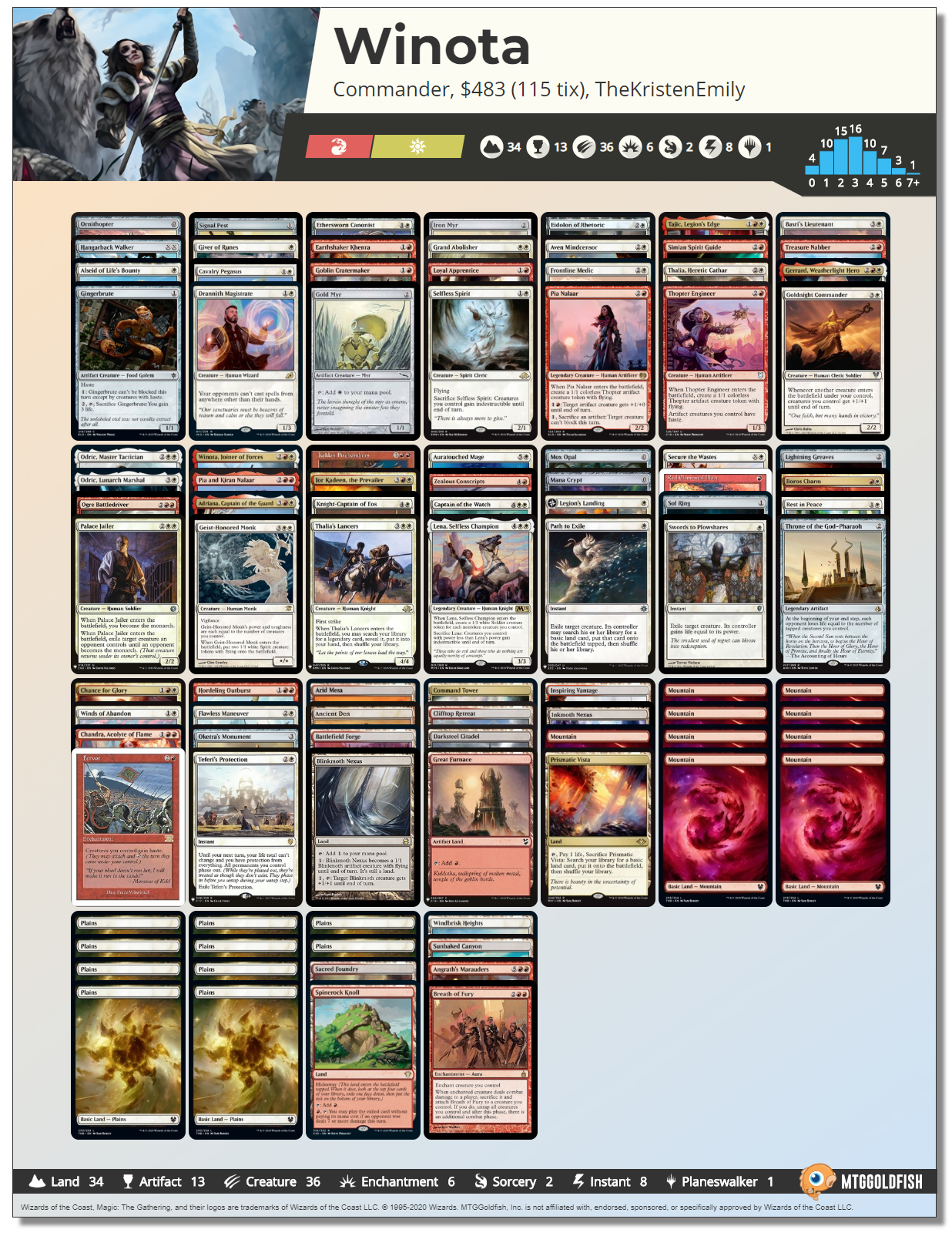
My current decklist focuses on playing at a high-power table, but not quite cEDH. There are a number of flex slots I’ve been testing, which I’ll go into detail on below; but if you came for a decklist, you can check that out now. Over half of the price of my build is tied up by Mana Crypt, Mox Opal, Teferi’s Protection, Prismatic Vista, and Arid Mesa.
If you want to try out a more budget build, you can easily swap those out, though the speed and consistency will take a hit. Some good replacements to try: Springleaf Drum, Arcane Signet, Unbreakable Formation, Fabled Passage, and Kher Keep.
Winota Affinity
So first thing’s first, Winota Affinity. I realize that I say that tongue in cheek—a lot of modern Affinity builds are “Affinity-less”—but hear me out. Winota is a deck that can care a lot about metalcraft, and that’s obvious just from the composition of the deck. We’re playing artifact creatures, humans that generate Thopters; and in our manabase, we run Darksteel Citadel, Ancient Den, and Great Furnace. If you’re playing with Mox Opal, these are necessary measures to ensure it can be online. Beyond that, though, actually triggering metalcraft isn’t something we care about.
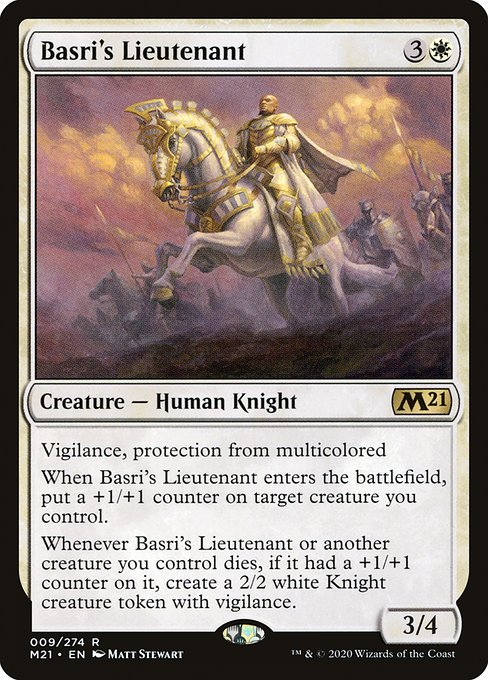
What brought me back to thinking about Affinity was the release of Basri’s Lieutenant from Core Set 2021. The ability to replace any creatures of ours that die with Knight tokens really intrigued me, as crucially, these Knight tokens are able to trigger Winota. For a one shot effect, having protection is kinda nice, and the counter probably goes on Winota to insure her for later turns. It’s also easy enough to cast the turn after we cast Winota if it does get stranded in our hand, so overall, it’s a card I’m quite high on anyways.
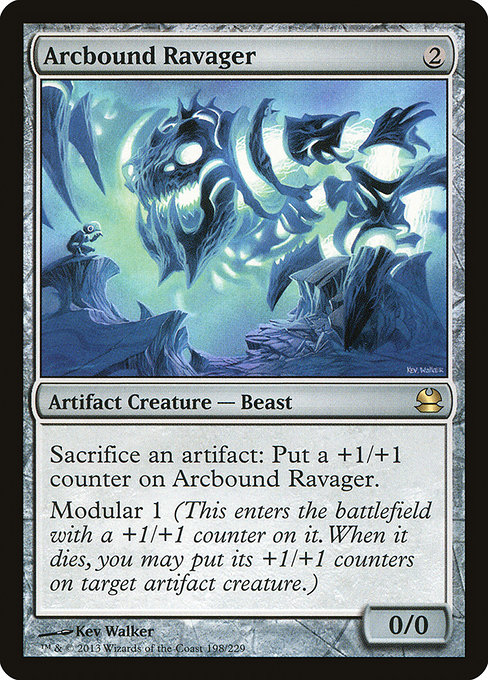
The Affinity archetype traditionally runs creatures with modular like Arcbound Ravager so that the power boost from the +1/+1 counters is not lost when creatures are inevitably removed. I think there’s some merit to considering how much we can adapt that strategy to enable Basri’s Lieutenant to be powerful insurance for boardwipes. There are a lot of creatures that can lean into this; beyond the Ravager itself, I think the following are worth looking into:
- Hangarback Walker: A card that already replaces itself with a Thopter, this can produce an extra token when Basri’s Lieutenant is in play.
- Walking Ballista: At higher power levels, this card can be a good deterrent to X/1s if your metagame has a lot of them.
- Metallic Mimic: Coming in and naming Human ensures what we pull from the deck is stronger, and potentially replaceable with Basri’s Lieutenant in play. It’s also a non-human.
Of course, Basri’s Lieutenant is only one card in the ninety-nine, so leaning too heavily into this set up is inadvisable. I do think that at least some of these four cards have potential, depending on your build, though, so they’re worth looking in to.
If you do decide to go down this route, then Thalia’s Lieutenant and Collective Effort become stronger considerations, especially when the tokens you make from Geist-Honored Monk and Captain of the Watch can be used to Escalate if necessary. And, if you’re playing a lot of early artifacts, then Gadrak, the Crown-Scourge isn’t the worst three drop either. It hits like a truck, and can begin to accrue treasure to power out Winota again. There’s also Dispatch and Galvanic Blast if you feel like you need more single target removal.
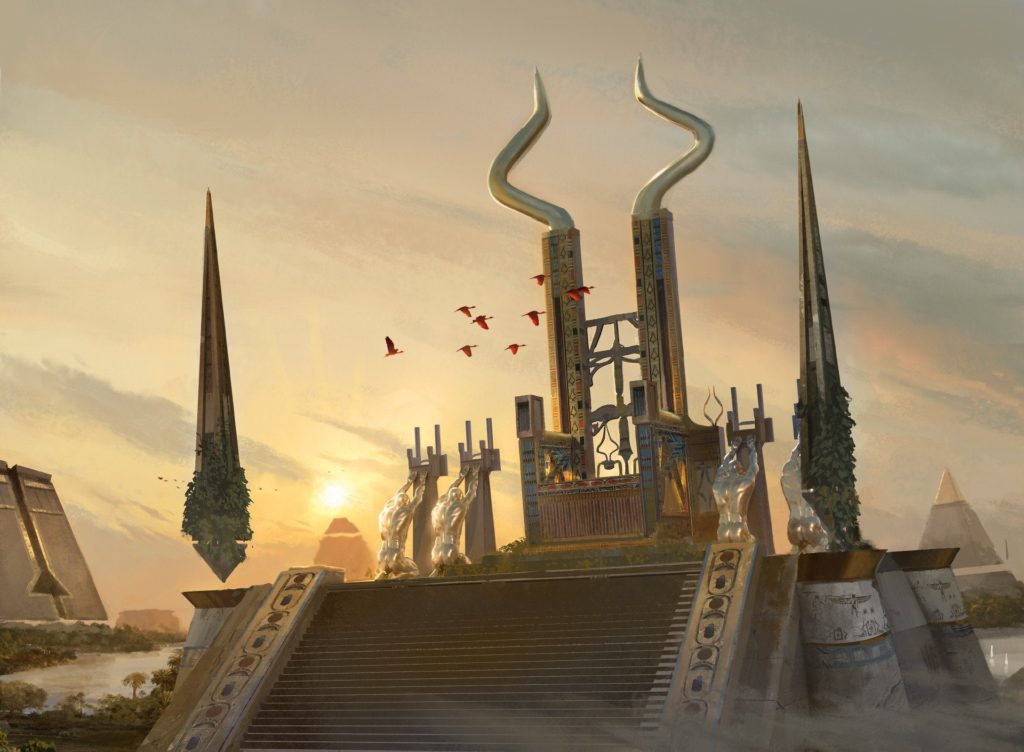
Throne of the God Pharaoh by Titus Lunter
Turning it up to Eleven
To get games over quicker, you’ll need to push things to the limit. If you’re in a position where you need to cast Winota for a third time, you’ve probably lost. The deck runs protection to account for this, like Teferi’s Protection, Flawless Maneuver, and Boros Charm, but the best defense is a good offence.
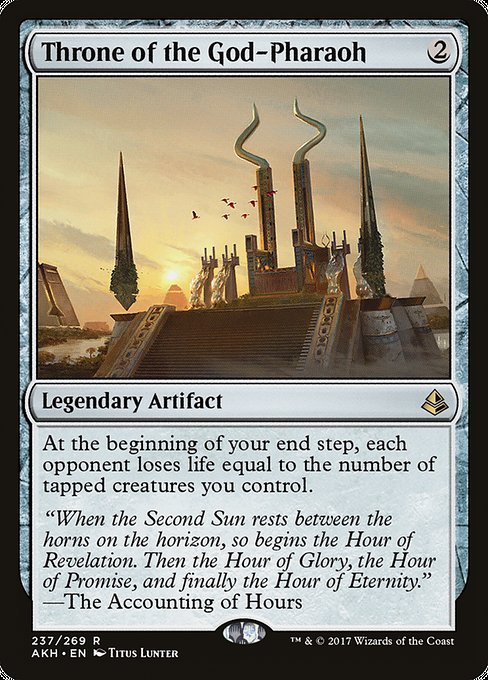
Throne of the God Pharaoh is a surefire way to get life totals moving, especially when your creatures from Winota come into play tapped. It helps ensure that the second casting of Winota is enough to end things, and can be fetched off of Thalia’s Lancers.
If you’re not running Auratouched Mage and Breath of Fury, then you should be. These cards combine into the potential for infinite combats provided you don’t whiff of Winota, with the caveat that only creatures with Haste will be able to attack once they untap. It’s easy to miss this, and for this reason, Zealous Conscripts can do a lot of work, and so can Fervor.
Depending on your metagame, Mass Hysteria might be a good shout too. I’ve since dropped the Allies contingent from my build to test other cards, but Firemantle Mage and Chasm Guide can do a lot to ensure this particular combo goes off without a hitch. If you are leaning into Allies, then Hero of Goma Fada and Bruse Tarl, Boorish Herder can help to bolster Rally triggers; and if you like this combo in a slower deck, Storm’s Herald might be worth considering too.
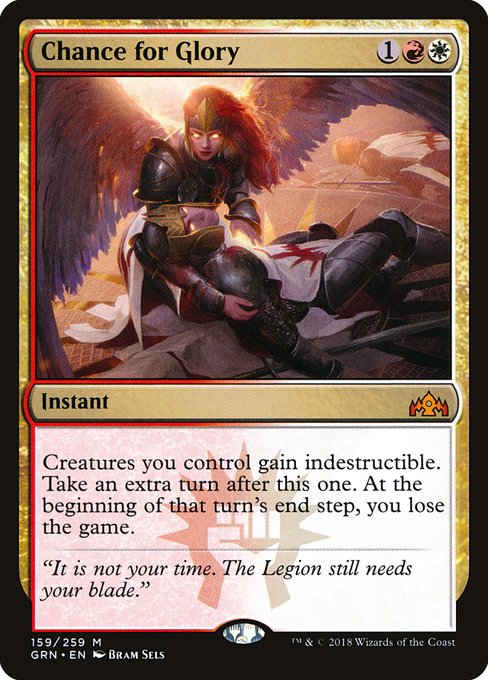
One final thing I’d like to emphasize is that if you do want extra combats, then chances are that Chance for Glory will be better for you than Relentless Assault. Given your Winota creatures won’t come into play with haste a good amount of the time, Chance for Glory effectively does a lot more than Relentless Assault. For one mana less, it gives you an extra card (from your draw step), untaps your lands, makes your current board Indestructible, and gives the current board haste. The losing at the end of the next turn trigger shouldn’t be a problem, as the deck should be able to win with one extra combat most of the time you want to cast one.
Combat Celebrant is less good than, say, Frontline Medic for similar reasons. Being able to attack for free with interaction against X spells can often be more valuable than having to untap with Combat Celebrant, which does very little when it comes into play from Winota.
Ramp & Draw
Winota wants to come out of the gates brawling, and take advantage of other decks having barriers down during the set-up phase of the game. I’ve found that ramp wise, fast mana and mana dorks are generally the better option, and I don’t think casting mana rocks after Turn 2 is advisable. Iron Myr and Gold Myr do a lot to make up for the fact we’re running 40+ creatures and less ramp than a normal deck, and Simian Spirit Guide is also there if you need it. If you have access to Lotus Petal, Chrome Mox, or Mox Diamond, they’re good additions as well.
Much like our mana dorks, Oketra’s Monument is a cornerstone of our deck, providing ramp and bodies, and it’s also fetchable from Thalia’s Lancers if you’re expecting you’ll have to rebuild. Treasure Nabber is one of my favorites for ramping, and I think I like it a little more than Dockside Extortionist at the moment—we rarely will get full value from the latter on turn two or three. It’s more of a rebuilding card.
In my playtesting, I really don’t think this deck ever wants to draw cards; and though I don’t own a Seasoned Pyromancer, I’d probably not aim to include it if it wasn’t for the ability to get value from it in the graveyard. Having our big bodies in hands sucks, and so Scroll Rack and Penance are very high on the list of priorities. I personally have found Scroll Rack a little slow, so I’ll be aiming to pick up a Penance soon.
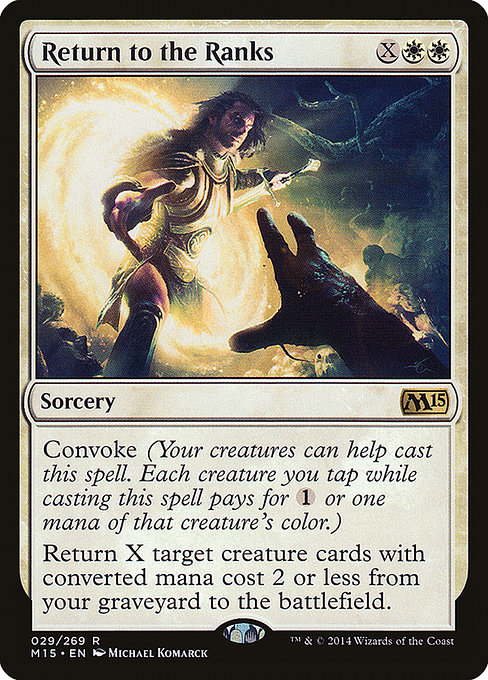
On the flipside, I do advocate for the other types of card advantage White has to offer. In the same vein as making tokens, we can re-animate to buy back what we need. There’s a vastly underplayed card here I’m currently aiming to test: Return to the Ranks. Ordinarily in EDH, there aren’t enough CMC 2 or less creatures a deck will care about for this to be a playable card. In Winota, though, it’s a way to draw cards without drawing cards. Getting back three hatebears for five mana, and recasting Winota on turn six, is a really strong line of play, and we will always have our hatebears and other early drops hitting the bin eventually. Sevinne’s Reclamation and Idol of Endurance are slower options along the same vein. If you are playing a little slower, Scroll Rack becomes more attractive again too.
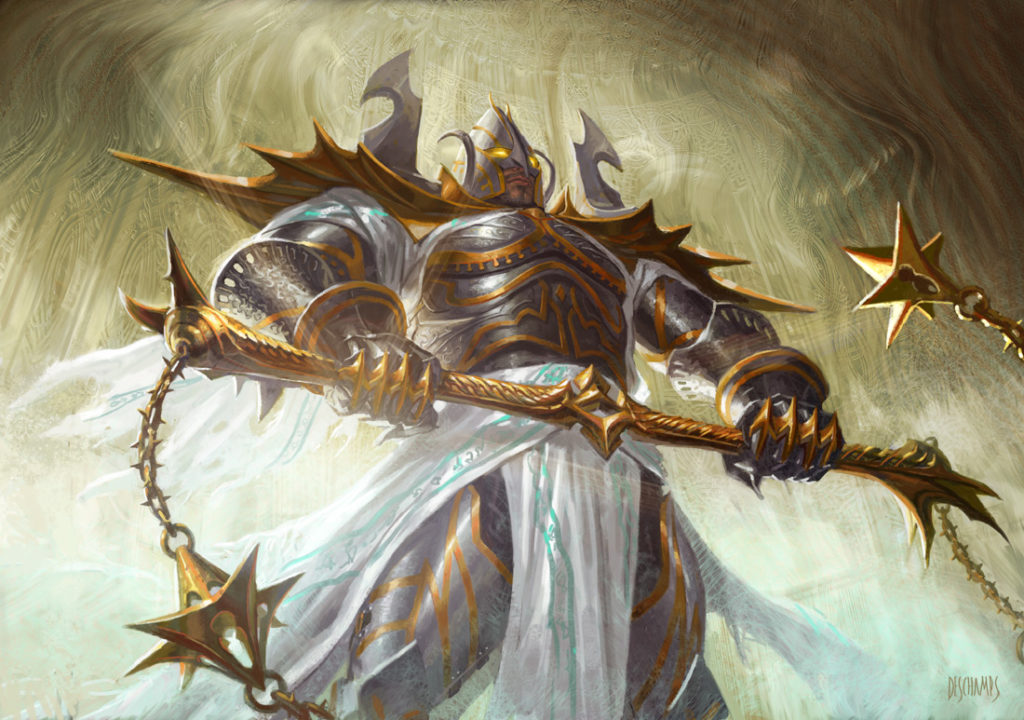
Grand Abolisher by Eric Deschamps
A Note on Hatebears
Picking the right Hatebears for Winota isn’t an exact science, as your local metagame will dictate which answers you prefer. Samurai of the Pale Curtain, for example, might do enough for you that you don’t need Rest in Peace, so that can free a slot up. The ones I prefer to run all center around cementing a lead, and being able to reduce the onslaught that will inevitably be pointed in your direction.
Grand Abolisher is the king here, and will allow you to sometimes hard-cast an Auratouched Mage to clean up without worrying about removal. Along similar lines, Hope of Ghirapur and Ranger-Captain of Eos can be sacrificed to reduce interaction, and I’ll be looking to pick up a copy of the former when I can.
Eidolon of Rhetoric and Aethersworn Canonist reduce the chances opponents can remove your board while also advancing their own, and Thalia, Heretic Cathar slows land drops and potential blockers. Drannith Magistrate can do a lot to stop other broken Commanders from being cast at all, and Keldon Firebombers can help you secure a lead by resetting ramp decks, which is especially useful when trying to dodge Cyclonic Rift.
As we bring this article to a close, I’d like to highlight two cards that are over-performers that I don’t think see quite enough play. Tajic, Legion’s Edge is fantastic insurance against Blasphemous Act and other damage based removal, and can provide some inconvenient hoops for other decks to jump through to remove your board. Odric, Lunarch Marshal is also a key roleplayer in the deck. Being able to spread Flying and Haste around the team during extra combats or extra turns is crucial to the deck being able to close games. On the flipside, I’ve cut Mob Rule and Aurelia, the Warleader, as they’re simply too expensive when considering the need to cast Winota multiple times across a game.
Hopefully some of the picks in this article can help you in sculpting your own list. Certain cards will shift and change depending on whether you’re building for high power EDH or trying your luck in cEDH, but the core of the deck is largely the same. I’m excited to watch this deck evolve as we see more humans printed, and there’s potential that the Allies section of the deck sees a revamp when we visit Zendikar again this October.
Let me know your thoughts on Twitter to continue the discussion!
Based in the UK, Kristen is a lover of both Limited and Commander, and can most often be found championing the Boros Legion when called upon to sit down and shuffle up.

